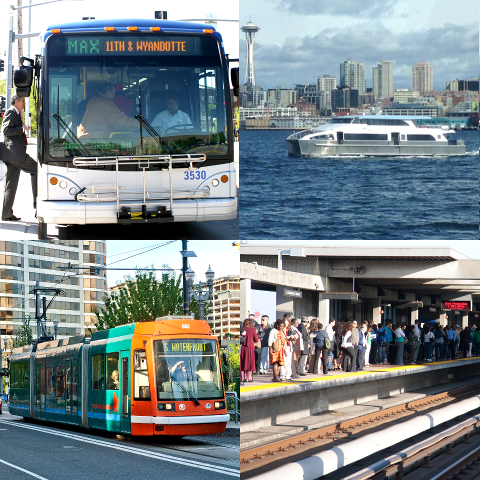 Improving Public Transportation for America's Communities
Improving Public Transportation for America's Communities
The Federal Transit Administration (FTA) provides financial and technical assistance to local public transit systems, including buses, subways, light rail, commuter rail, trolleys and ferries. FTA also oversees safety measures and helps develop next-generation technology research.
Transit services supported by FTA span many groups and provide wide-ranging benefits. Since 1964, FTA has partnered with state and local governments to create and enhance public transportation systems, investing more than $12 billion annually to support and expand public rail, bus, trolley, ferry and other transit services. That investment has helped modernize public transportation and extended service into small cities and rural communities that previously lacked transit options.
An agency within the U.S. Department of Transportation (DOT), FTA is headed by an administrator appointed by the President of the United States. FTA is one of DOT’s 10 modes of transportation and is run by a headquarters in Washington, D.C. as well as 10 regional offices that assist transit agencies in all states and U.S. territories.
History
In 1962, after nearly a decade of focusing on building the interstate highway system, federal lawmakers began to consider federal funding for mass transportation. President Kennedy called for federal support for transit, citing the need to expand urban transportation systems. By that time, cities had eliminated street car service and cut back on bus systems, and several commuter rail services had closed.
Support grew. In 1964, President Lyndon Johnson signed the act creating the Urban Mass Transportation Administration (UMTA), which was charged with providing federal assistance for mass transit projects.
In the 1970s, UMTA’s role – and resources – was broadened. The 1974 National Mass Transportation Assistance Act created an annual formula grant program. That expansion helped transit agencies, in a general decline across the country, to restore and expand service. Legislation in the late 1970s elevated the role of transit by addressing it with highway funding, recognizing public transportation as an important part of America’s overall mobility.
In 1991, the agency was renamed the Federal Transit Administration (FTA) to reflect its reach into rural areas and on ensuring mobility for all Americans, including people with disabilities.
Over its five decades, FTA has overseen the transformation of public transportation in America from legacy subways confined to the country’s biggest cities – New York, Boston, Philadelphia and Chicago – to a diverse set of transit systems in dozens of cities and towns. By supporting the development and maintenance of light rail, bus rapid transit and expanded bus systems in addition to subways and commuter rail, FTA has provided alternative transportation options for people across America. Its work to create and expand urban systems and extend service into small cities and rural communities that previously lacked transit has made public transportation a viable option throughout the United States.
Funding
Chapter 53 of Title 49 of the U.S. Code establishes the authority for FTA. It incorporates the Urban Mass Transportation Act originally enacted in 1964 and states that “it is in the interest of the United States, including its economic interest, to foster the development and revitalization of public transportation systems that (1) maximize the safe, secure, and efficient mobility of individuals; (2) minimize environmental impacts; and (3) minimize transportation-related fuel consumption and reliance on foreign oil.”
Congress authorizes money to FTA in long- and short-term transportation legislation, such as the Fixing America’s Surface Transportation (FAST) Act in 2015. The transportation bills amend Chapter 53 to modify or set up funding programs and laws for FTA to follow.
In 1982, legislators approved a one-cent federal gas tax dedicated for transit, carving out a new Mass Transit account from transportation funding’s Highway Trust Fund. In 1991, funding was further bolstered when policymakers allowed use of highway program funds for public transportation.
Transit’s share of the gas tax increased to 2.86 cents in the 1990s, a decade that also saw an emphasis on increased funds for maintenance of rail cars, vehicles and tracks.
FTA now invests more than $12 billion annually to support and expand public transit.


